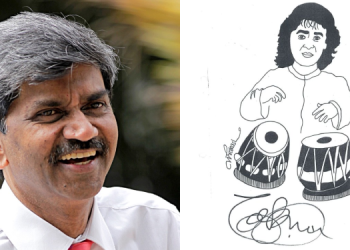In India, the world’s largest democracy, a vibrant and credible media landscape is the bedrock of a healthy society. With their extensive influence, news channels have emerged as the foremost influencers of public sentiment. Nevertheless, the fundamental pillars of news, namely truth and verifiability, face a formidable challenge today from a cunning and sophisticated adversary: deepfakes.
The recent case involving Mr. Rajat Sharma, Chairman and Editor-in-chief of India TV, highlights the severe dangers posed by deepfakes. In his petition, he asserts, “The absence of adequate regulations and safeguards against the misuse of deepfakes poses a significant threat to the fundamental rights enshrined in the Indian Constitution, such as freedom of expression, privacy, and the right to a fair trial.”
A video showing Mr. Rajat Sharma was shared on social media channels, promoting incorrect medical advice. The video wasn’t just a prank. It had the potential to damage Mr. Rajat Sharma’s reputation and the public’s trust in the information he provides. This concern is reflected in his response: a Public Interest Litigation (PIL) filed in the Delhi High Court. His petition highlights the growing worry about deepfakes and their potential impact on the media industry.
“Deepfake” employs AI to superimpose a person’s face onto another person’s body, making the videos seem very realistic. Notable people have previously been targeted using this method. The impact of deepfakes on news organisations is multifaceted. Firstly, they create an environment of suspicion and distrust. Viewers bombarded with fabricated content become hesitant to believe anything they see or hear. This scepticism spills over to legitimate news sources, leading the public to rely on unverified information circulating on social media.
Secondly, deepfakes put a strain on resources. News organisations are forced to invest heavily in sophisticated detection technologies to verify content authenticity. Every undetected deepfake can potentially inflict significant reputational damage and lead to costly legal battles. Also, the potential for social unrest and the destabilisation of democratic processes is a real threat.
For several reasons, fighting deepfakes is a very pressing issue in India. The extensive use of social media platforms enhances the propagation of deepfakes, causing them to gain traction and further undermine faith in authentic news platforms.
The battle against deepfakes in India requires a well-thought-out strategy. The media industry must begin investing in state-of-the-art AI-powered systems that can detect deepfakes more accurately. Furthermore, it is vital to use fact-checkers to validate material, examine sources twice, and cross-check data. The last piece of the puzzle is public awareness efforts, which are vital in teaching viewers to spot deepfakes and other forms of fake news. The public can be empowered to become more critical information consumers if they are educated about the telltale indicators of deepfakes, such as unrealistic facial expressions or lighting anomalies.
Collaboration among various stakeholders is also crucial. News media organisations need to modify their verification processes, while social media platforms must take responsibility for the content they host. The government can have a significant impact by enacting regulations on deepfake technology and creating legal mechanisms to punish those responsible. That those who weaponize this technology face serious repercussions are why legislative measures should be considered, such as harsh penalties for making and disseminating deepfakes with evil intent.
Vitally, the technology industry has a significant role to play. Tech companies, especially those developing AI and machine learning algorithms, must prioritise ethical considerations in their work. This includes creating tools that can detect and flag deepfakes and implementing safeguards to prevent the misuse of their technologies. Transparency in AI development and the implementation of ethical guidelines can help mitigate the risks associated with deepfake technology.
The credibility of media houses can be strengthened by a comprehensive and collaborative approach to combating deepfakes. Information security and the bedrock of our democratic society can be preserved by technological investment, public education, and strong legislation. Keeping the above-mentioned scenarios in mind, it can be said that the ever-changing media environment in India makes the country a frontrunner in the fight against deepfakes and a global model for regulation and awareness.
Article Authored by Ritu Dhawan, Managing Director of India TV

















